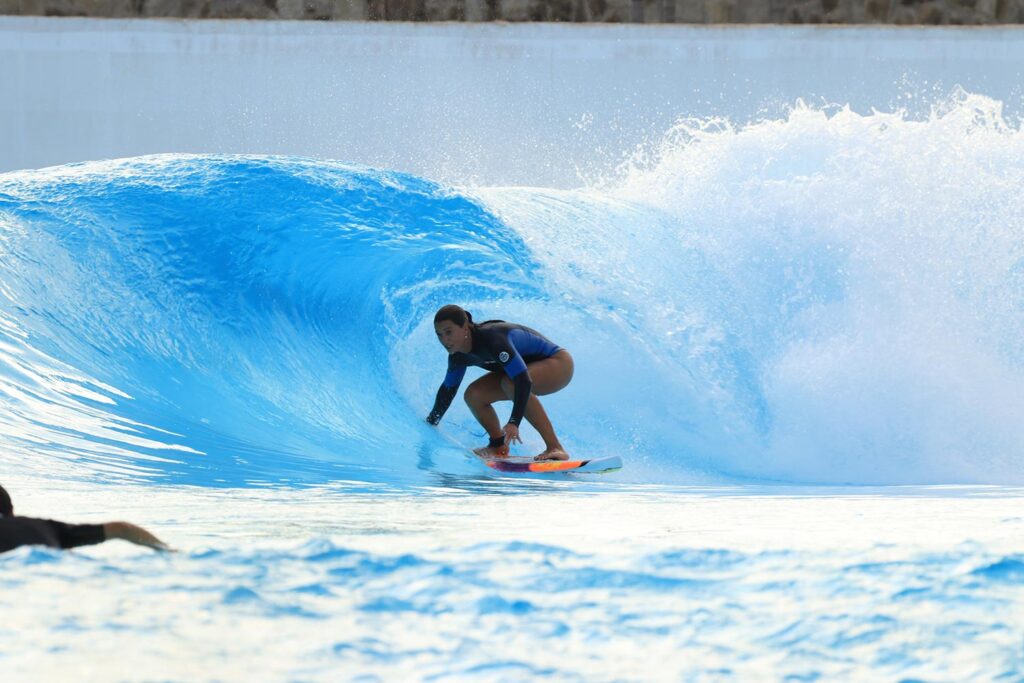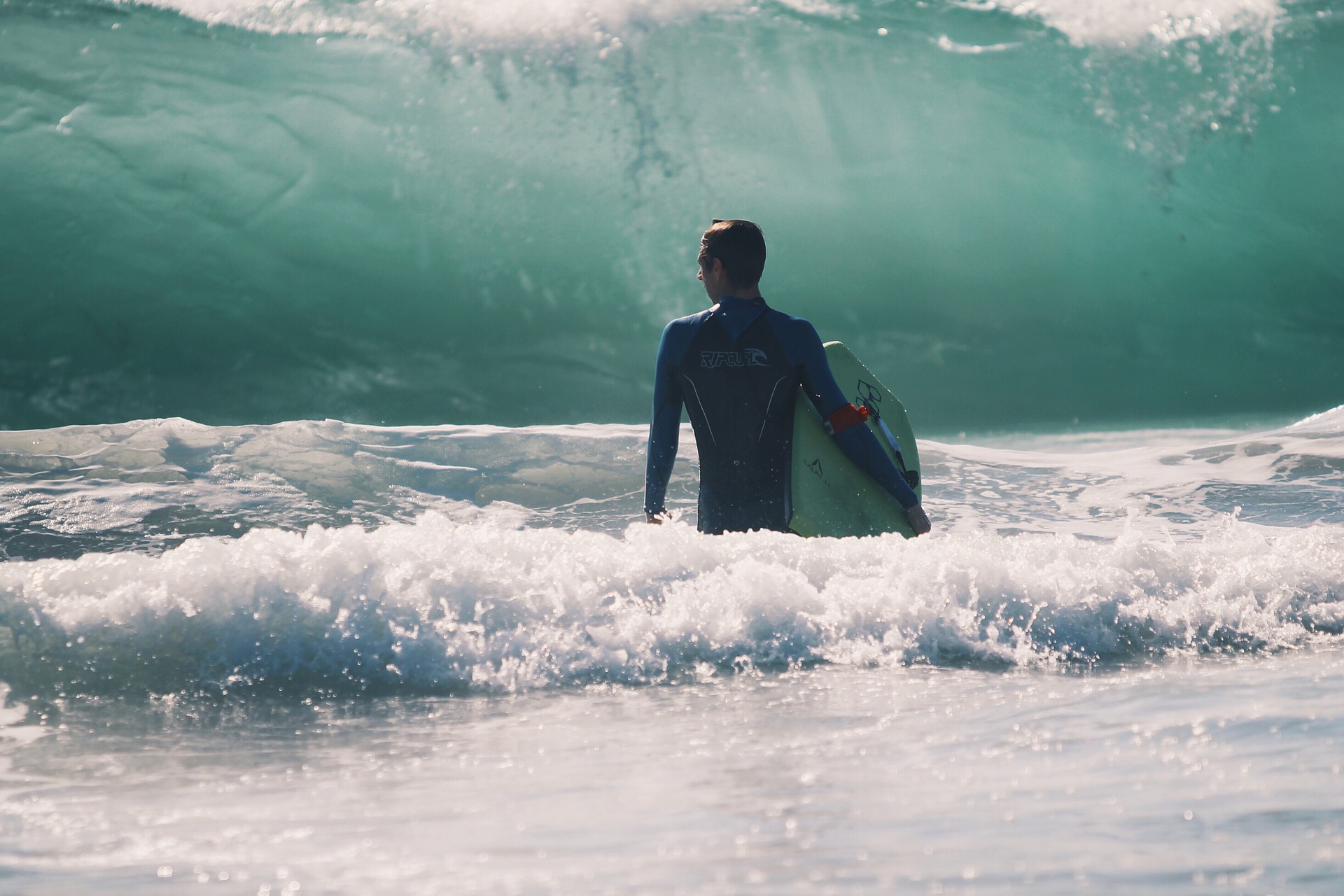
27 May, 2024
· 0 comments
Whether due to poor learning or lack of constant practice, there are certain types of misbehaviour that are very common among surfers, especially those just starting out in the sport, and which can represent a significant stagnation in their progress in surfing. This type of common mistakes, besides considerably affecting your performance, can make learning boring by not allowing you to perform effective maneuvers on the waves, hence the need to correct them as soon as possible in order to move forward. Although they are usually made by newcomers, many surfers of different levels have naturalised these mistakes, so it is essential to know them so that they can be corrected in time. Below, let’s see what are the 5 most common mistakes that stall your progress in surfing and what you can do to remedy them.

In surfing, as in any sport, physical and mental preparation is essential for a good performance in the sea. Not doing warm-up and stretching activities is usually a typical mistake among newcomers and they tend to keep it up as the years go by. It is a matter of carrying out simple routines, focused on maintaining physical condition by working on anaerobic capacity, body balance, physical resistance and mobility, in just a few minutes before entering the water. Some exercises, such as running barefoot on the sand to improve balance and strengthen the foot muscles, or high-intensity interval routines, are more than recommended for entering the sea in good physical condition. It is important that those who are starting to surf and have not yet worked on their physique, get proper advice from a coach to establish the limitations of the training, conditioned to pre-existing injuries, heart problems or any other health difficulty. From there, the routine should begin by strengthening the core of the body, that is, those abdominal, lumbar and quadriceps muscles responsible for supporting both their own weight and that of the loads to be lifted, and then continue by strengthening the other muscles. The routine should include work on unstable bases, coordination circuits and proprioceptive exercises. In addition, for more advanced levels, it is important to work on decision-making in stressful conditions.
As is the case with most sports, learning to surf must result from an adequate combination of technique and strength. However, it is the technique that will govern our progression in surfing and if it is poorly learned and we do not correct it in time, there will be stagnation and frustration at not making progress. One of the most common technical errors among beginners is inefficient paddling, which makes it difficult to catch good waves. This usually happens because you learn to paddle with your shoulders too low and making excessive lateral movement, destabilizing the board. The result is a lack of speed to catch the wave. On the other hand, standing up with the knee is another of the techniques that beginners find most difficult to learn and which prevents them from progressing in their learning. Far from what many people think, standing up correctly has more to do with technique than with strength, although both undoubtedly represent an important factor. The inadequate separation of the feet on the board, the bad position of the hip when we are on the wave and the loss of contact with the board when pumping, are three other very common technical errors that, if not corrected in time, can stagnate your progress in surfing. At the intermediate level, a couple of common mistakes among surfers is not flexing the body enough to adapt the body to the maneuver or turning the head when making a turn. Leaving rigidity aside is essential for good performance, especially when the difficulty of the maneuver you want to perform is greater.

Another of the most common mistakes surfers make is not measuring the level of risk when entering the sea. It is usual that, when we receive the first instructions on how to surf, we start looking for the best wave that will make us feel all the adrenaline possible. The decisions taken at sea must be subject to our own level of learning, without taking any more risks than necessary. Thus, when deciding on the spot, the convenience of entering the sea according to the time and the type and size of wave to be surfed, we must be consistent with our own level of surfing. Being aware of one’s own limitations is a fundamental aspect of safeguarding our physical integrity; in this way, we will be able to enjoy this sport to the full, with maximum control over the risks.
One of the first actions of those who are just starting out in surfing is to buy their first board, even if they have barely learned the basics of the sport. In principle, this should not represent any mistake. However, the thing is that the choice is usually wrong, opting for state-of-the-art shortboard, fish or longboard surfboards, based only on the visual aspect and trying to emulate professional surfers. This, without a doubt, represents a big mistake for the newcomer. Although it is possible to surf on this type of board, it is necessary to choose the most suitable one according to the level you are at. For example, the shortboard, despite being one of the most common and used, requires a good technical level and a good physical condition from the surfer; it would be a big mistake to start surfing with one of these boards. In the same way, the longboard, modern replicas of the first surfboards, are not very recommended for beginners who want to learn how to surf as they require a certain technique when turning. These boards allow you to ride almost any type of wave and are a lot of fun, but are recommended for those passing through at an intermediate level. What is recommended for those who are starting to surf and want to evolve to the next levels is to choose a board that is stable and easy to turn, like the evolutionary surfboards, which are intermediate between the shortboard and mini malibu. Then, as you progress in your learning, you can opt for the surf fish boards that are ideal for intermediate level surfers, as they are wider and thicker.
It is usual that beginners, eager to start riding the waves, do not take into account the basic rules of conduct that govern surfing. Through this kind of surfing code, it is possible to harmonize the practice of this sport among all surfers anywhere in the world. Respecting the preference and waiting for the turn to catch the wave, always observing what is happening around, establishing an active communication with the other surfers in the water, keeping calm and not bothering the other surfers, are just some of the precepts of this kind of pact that allows to establish a climate of respect among all the surfing community. Along these lines, it is necessary to be careful not to interfere with another surfer’s journey, in order to prevent dangerous situations. In this way, we will manage to have a safe experience, leaving aside unnecessary risks and we will be able to enjoy surfing, away from the dangers of the sea and feeling safe.

These are some of the most common mistakes made by surfers of all levels that prevent them from progressing in learning this exciting sport. The constant training, the visualization and analysis of videos and images of yourself surfing and the advice of a specialized monitor, represent the right formula to get out of the stagnation. If you have been able to identify some of these errors in your routine, you should know that they have happened to all of us at some point, especially during the beginning; therefore, we encourage you to correct them as soon as possible, so that you can visualize the changes and make progress in your surf training. Come to Calima surf school Famara beach
Comments
Leave a comment
Your e-mail address will not be published. Required fields are marked with *.